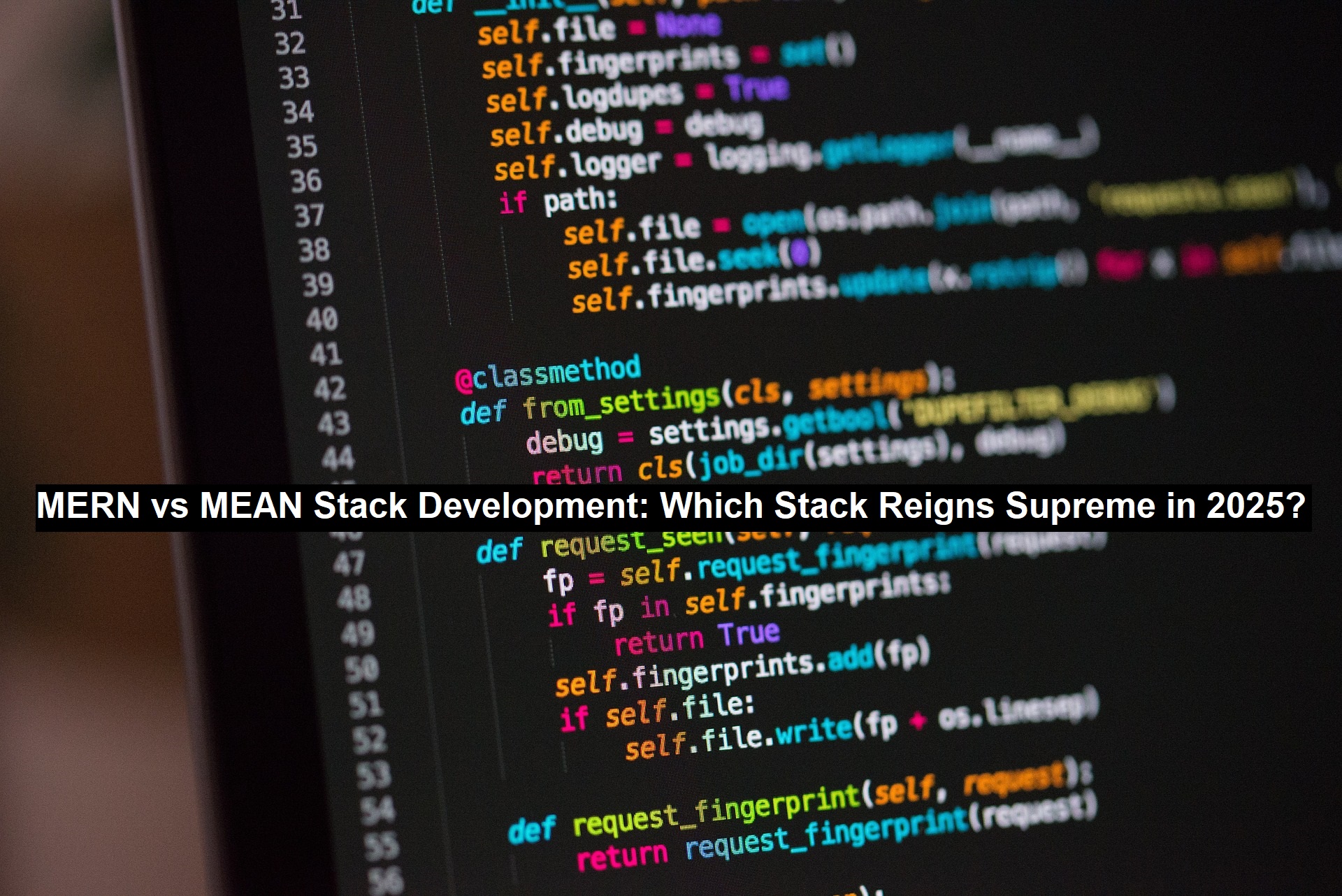The tech world is still under a spell by the warfare between MERN and MEAN stack development. Whilst each may have been almost exclusively used for full-stack development, its strong points differ in quite a few ways. Here’s a comparison of the two with their major differences and what might be suitable for your next project.
MERN StackWhat is the MERN Stack?
MERN stands for MongoDB, Express, React, and Node.js. MERN is a full stack JavaScript solution that offers developers methods of making dynamic web applications. Such fantastic flexibility in this stack is especially when it comes to single-page applications, SPAs. It’s widely applied in the modern development of the web nowadays.
Key Technologies in the MERN Stack Development
- MongoDB
MongoDB is a NoSQL database for storing data in a flexible JSON-like format, great for applications when massive amounts of unstructured data have to be handled and scaled.
- Express
Express is the leaner Node.js web application framework that let developers build server-side applications without any sacrifice from robust routing and middleware capabilities.
- React
It is Facebook’s front-end library to be used for building user interfaces; it is especially more efficient for dynamic web applications by having component-based architecture and making use of virtual DOM.
- Node.js
Node.js is a JavaScript environment under which you execute your JavaScript code in a server environment. This allows the front-end and back-end components to communicate smoothly.
Read: SEO For WordPress in 2023: Vital Tips for Enhanced Performance
Strengths of the MERN Stack in Modern Web Development

- Full-Stack JavaScript: The MERN Stack reduces the number of language changes since the developer can use JavaScript for front-end and back-end development.
- React’s Flexibility: React provides a component-based architecture that encapsulates code for reusability, which helps in quickening development pace and efficiency.
- Scalability: MongoDB’s flexible schema and asynchronous capabilities of Node.js make MERN suitable for heavy volumes of traffic.
- Active Community Support: MERN has a large and active developer community, which ensures to provide users with a significant amount of resources for the resolution of problems.
What is the MEAN Stack?
MEAN stands for MongoDB, Express, Angular, and Node.js. MEAN is like MERN, a full-stack JavaScript solution that has the difference lie in using Angular instead of React for the frontend.
Key Technologies in the MEAN Stack Development
- MongoDB
Like MERN, MEAN uses MongoDB as its database, enabling comprehensive usage for storing and retrieving unstructured data.
- Express
Express remains the library choice for server-side web framework development in MEAN, which remains simple and scalable.
- Angular
Angular is the Google-owned, front-end framework based on TypeScript, with a more opinionated structure compared to React, emphasizing two-way data binding as well as dependency injection.
- Node.js
Node.js acts as the backbone to MEAN and provides server-side development through JavaScript.
Strengths of the MEAN Stack in Modern Web Development
- Structured Framework: Angular’s opinionated nature provides developers with a clear structure, making it easier to follow best practices in development.
- Two-Way Data Binding: Angular comes with two-way data binding where the changes in the user interface itself update the model and vice versa.
- Full-Stack JavaScript: Like MERN, MEAN also supports the consistency of using JavaScript throughout the development process.
- Scalability: The use of MongoDB and Node.js makes MEAN highly scalable for large enterprise applications.
MERN vs MEAN Development: Key Differences
Front-End Frameworks (React vs. Angular)
While MERN relies on React, which allows for greater flexibility and speed due to its virtual DOM and one-way data binding, Angular found within MEAN provides two-way data binding and opinionated structure suitable for developers looking at a completely featured framework.
Learning Curve and Developer Experience
- MERN (React): Unlike Angular, learning curve is not pronounced in React, and developers always look for more freedom with more flexibility in comparison.
- MEAN (Angular): Angular needs developers to understand TypeScript better and its structure, which is meant to be MVC architectural compared to React. This might make the learning curve bigger for newer developers.
Flexibility and Ecosystem
- MERN: React’s flexibility allows developers to integrate various libraries and tools, creating a custom solution.
- MEAN: Angular comes with a built-in structure that enforces certain development practices, which can be helpful for larger teams.
Performance and Scalability
- MERN: React’s one-way data binding and virtual DOM make it highly performant for dynamic web applications.
- MEAN: Angular’s two-way data binding can lead to performance bottlenecks for very large applications but excels in handling enterprise-level solutions.
Use Cases: When to Choose MERN Development?
- Single-Page Applications (SPAs): MERN is excellent for SPAs due to React’s fast rendering.
- Real-Time Applications: Its event-driven, non-blocking architecture makes MERN suitable for real-time data handling.
- Custom and Dynamic UI: When the user interface plays a central role, MERN’s React component model offers maximum flexibility.
Use Cases: When to Choose MEAN Development?
- Enterprise Applications: MEAN would be preferred especially in very large-scale enterprise applications due to its structure, which goes hand-in-glove with Angular’s two-way data binding is highly apt.
- Complex Front-End Interactions: Angular dependency injection and modularity would be much more suitable for complex front-end applications.
- MVC Architecture-Based Projects: However, if you need a strong-structured MVC approach, then MEAN’s Angular framework is perfect for you.
Trends and Future Outlook of MERN and MEAN in 2025
In 2025, both stacks continue to evolve, with significant trends shaping their future:
- MERN: React will persist to dominate the front-end application space. SSR and performance capabilities have been further updated on top of that with React Hooks, which benefit modern web applications.
- MEAN: Angular continues as a fast-in-development environment with fast releases and excellent performance; therefore, it’s currently great for big projects in the enterprises.
- Cross-Platform Development: Both stacks’ scalability will increase even more, and developers will use those stacks to create cross-platform mobile applications. More and more developers tend to develop cross-platform mobile apps through frameworks like React Native (MERN) and Ionic (MEAN).
Conclusion: Which Stack Should You Choose?
The choice between MERN and MEAN ultimately depends on your project needs:
- Choose MERN if you require high flexibility, fast development speed, and a rich user interface with dynamic components.
- Choose MEAN if your project needs a highly structured approach, enterprise-level architecture, and robust performance for large-scale applications.
In 2025, both stacks remain highly relevant, but MERN often leads in terms of developer preference due to its flexibility and ease of use, However, MEAN Stack development stands out in enterprise environments, where its more structured and opinionated framework is a strong advantage.

